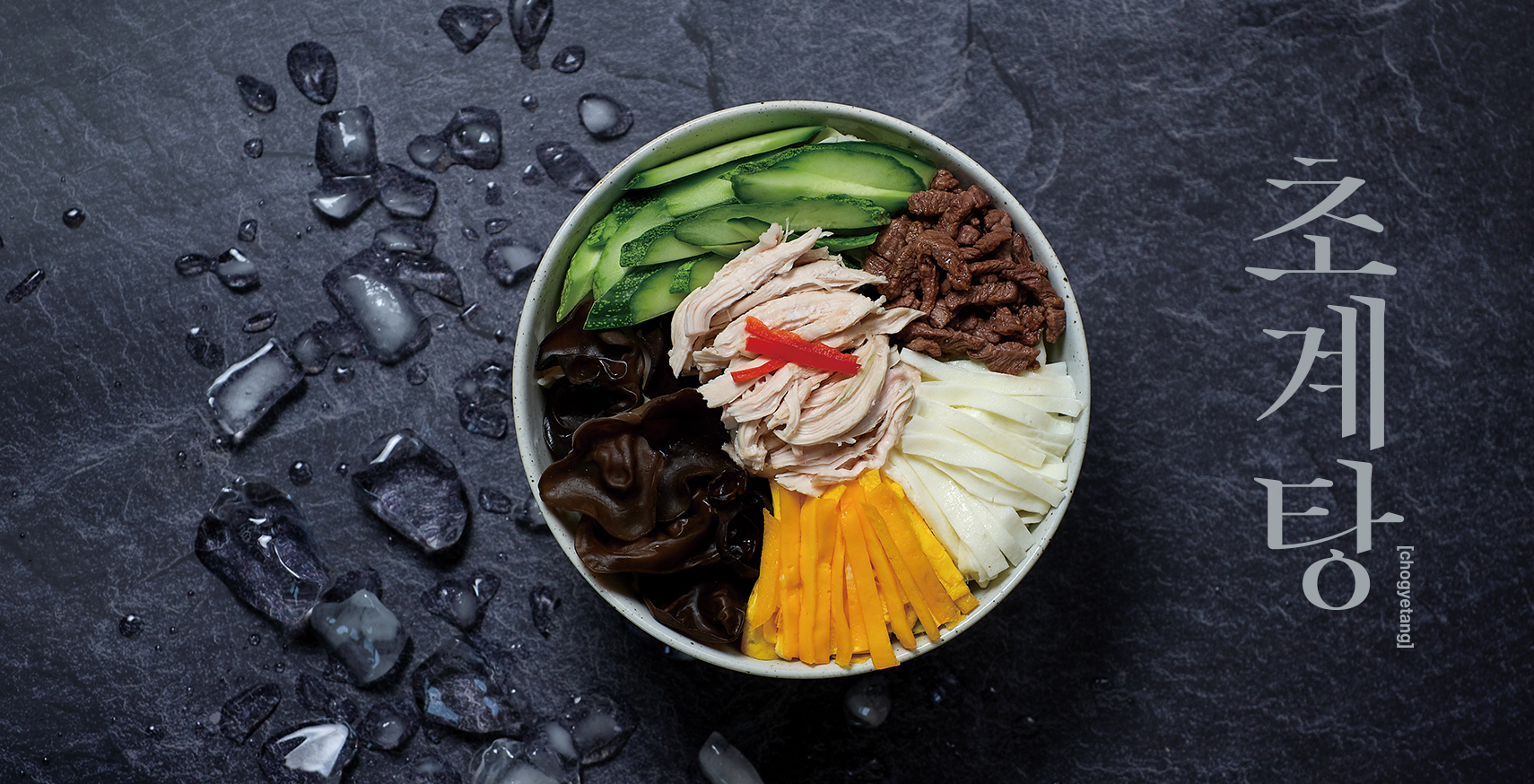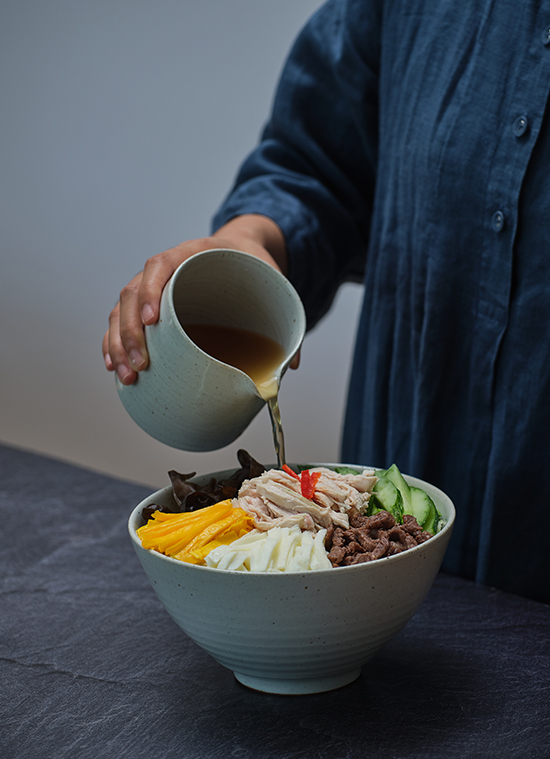August 2021

August 2021
Chogyetang, or “vinegar mustard soup,” is a popular summertime treat of shredded chicken meat, mushrooms, cucumbers and other ingredients served in a chilled chicken broth seasoned with vinegar and mustard. Both rich and tangy, this specialty of northern Korea gives you the energy you need to get through the heat and humidity of summer, albeit in a slightly different way from Korea’s other summertime dishes.
Written by
Robert Koehler,
contributing writer
Photographed by
Studio Kenn
 © imagetoday
© imagetoday
When the hot, humid days of summer set in, Koreans often turn to boyangsik, or “energy foods.” Boyangsik are protein-rich dishes that restore your stamina, helping you overcome the lethargy brought on by the oppressive heat and humidity of mid-summer and late summer.
Many of these dishes are rich, heavy soups such as the summertime classic samgyetang, which consists of an entire baby chicken, boiled and stuffed with rice and ginseng. These dishes are typically served hot.
Not all boyangsik follow this rule of thumb, however. One of Korea’s more unique summer dishes in chogyetang, a specialty of Pyeongan-do Province in northwest Korea, in what is now North Korea. Its name translates as “vinegar mustard soup,” though quite unlike other soups―or tang―this one is served chilled, similar to the cold mustard salads or naengchae Koreans also enjoy in summer. Being a cold dish, it’s also akin to another Korean summertime classic, namely, chilled noodles, or naengmyeon.
shredEssentially, chogyetang is a chilled soup of chicken broth and shredded chicken meat, served with mustard, vinegar and other ingredients such as cucumber, mushrooms and shredded egg.
The main ingredient of the dish, chicken, provides the protein needed to fight summertime fatigue and stress. It also protects your digestive tract, and you can eat it cold without fear of indigestion. The vinegar, too, helps ward off indigestion; it also detoxifies the body and gives you an energy boost. The mustard, meanwhile, gives the dish a bit of a kick.

 Chogyetang isn’t complete until you’ve added the cold broth.
Chogyetang isn’t complete until you’ve added the cold broth.
Though chogyetang is widely enjoyed by the masses today, its roots go back to the palace cuisine of the Joseon Kingdom (1392-1910).
A recipe for a dish matching chogyetang is first introduced in the “Jeungbosallimgyeongje,” a text on the national lifestyle and economy published in 1766, the 42nd year in the reign of King Yeongjo. It also makes an appearance in several official court illustrations of palace rites and events.
Initially, the dish seems to have been served largely at royal banquets as people could enjoy the shredded chicken without having to debone it first. Indeed, according to one court illustration, the dish was served during the 60th birthday banquet for Queen Hyegyeonggung Hong, the mother of King Yeongjo’s successor, King Jeongjo (1752-1800).
Like naengmyeon, the dish was also consumed during the winter months as well. In modern times, the dish spread to the population at large, becoming especially popular in the northern regions of Korea. Professor Jang So-young of Kyung-Min College and Han Bok-ryo of the Institute of Korean Royal Cuisine have tracked a number of changes to chogyetang’s preparation as well, with the dish taking its present shape only from the 1980s.
Its name translates as ‘vinegar
mustard soup,’ though quite unlike
other soups, this one is served chilled.
Preparing chogyetang isn’t especially difficult. Firstly, you need to remove the skin and fat from a whole chicken. This prevents the broth from becoming too greasy. Then you boil the chicken with seasoned green leaves to make the broth. When you’re done with the broth, you can remove the tender, boiled chicken meat from the bone and shred it. Cool the broth and add vinegar, mustard, soy sauce, sugar and salt. Some people mix in naengmyeon broth as well.
Next, it’s time to season some shredded beef, fry up and slice some egg yolks, dice up some cucumbers and hydrate and season some mushrooms. When this is done, you add the shredded chicken and other ingredients to a bowl and pour in the broth. Of course, the dish will differ a bit from place to place and from chef to chef. Some places, for instance, will add fried sea cucumbers for an additional protein hit.
Ultimately, what you get is a cool, rich soup with a tangy flavor thanks to the vinegar. The mustard, meanwhile, gives the dish a bit of a punch.
 Chogyetang’s colorful ingredients give the dish a visual appeal as well.
Chogyetang’s colorful ingredients give the dish a visual appeal as well.
While chogyetang can be enjoyed as is, some chefs prefer to add buckwheat noodles, or memilmyeon, to the soup. Though this makes the dish a substantially heavier meal, this is not necessarily a bad thing, especially if you’re looking for an extra energy boost.
Indeed, one restaurant in Seoul’s Euljiro district―founded in 1950 by a family originally from North Korea’s Pyeongan-do Province―serves the dish in exactly this way, accompanied by a cold and very spicy chicken salad that’s absolutely addictive. The place is so popular that long lines are common in summer, especially at lunchtime.